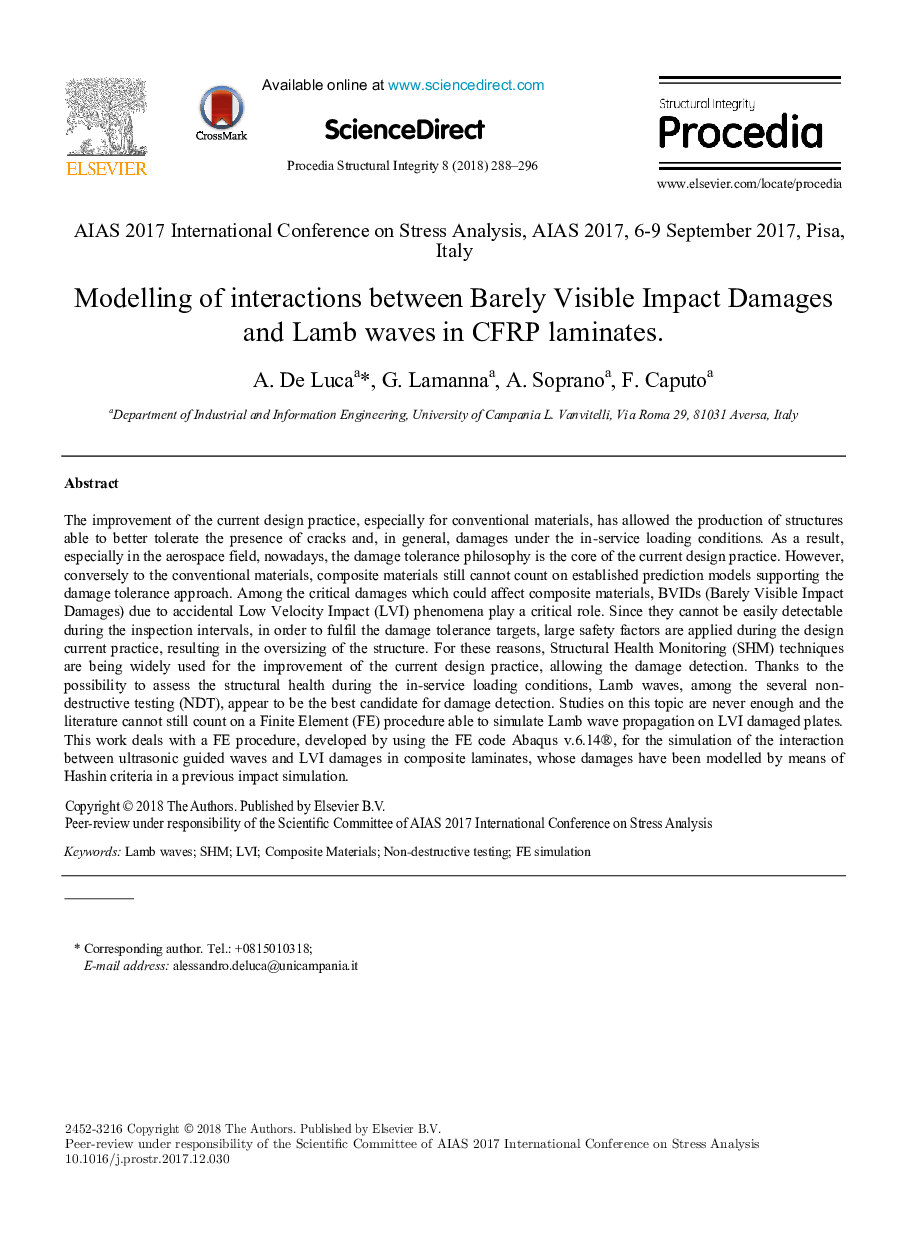| Article ID | Journal | Published Year | Pages | File Type |
|---|---|---|---|---|
| 7954694 | Procedia Structural Integrity | 2018 | 9 Pages |
Abstract
The improvement of the current design practice, especially for conventional materials, has allowed the production of structures able to better tolerate the presence of cracks and, in general, damages under the in-service loading conditions. As a result, especially in the aerospace field, nowadays, the damage tolerance philosophy is the core of the current design practice. However, conversely to the conventional materials, composite materials still cannot count on established prediction models supporting the damage tolerance approach. Among the critical damages which could affect composite materials, BVIDs (Barely Visible Impact Damages) due to accidental Low Velocity Impact (LVI) phenomena play a critical role. Since they cannot be easily detectable during the inspection intervals, in order to fulfil the damage tolerance targets, large safety factors are applied during the design current practice, resulting in the oversizing of the structure. For these reasons, Structural Health Monitoring (SHM) techniques are being widely used for the improvement of the current design practice, allowing the damage detection. Thanks to the possibility to assess the structural health during the in-service loading conditions, Lamb waves, among the several non-destructive testing (NDT), appear to be the best candidate for damage detection. Studies on this topic are never enough and the literature cannot still count on a Finite Element (FE) procedure able to simulate Lamb wave propagation on LVI damaged plates. This work deals with a FE procedure, developed by using the FE code Abaqus v.6.14®, for the simulation of the interaction between ultrasonic guided waves and LVI damages in composite laminates, whose damages have been modelled by means of Hashin criteria in a previous impact simulation.
Related Topics
Physical Sciences and Engineering
Materials Science
Materials Chemistry
Authors
A. De Luca, G. Lamanna, A. Soprano, F. Caputo,
